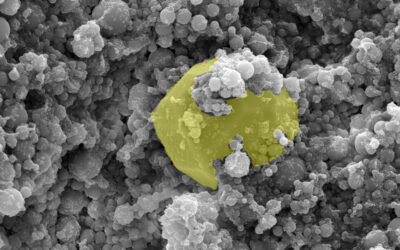In a world driven by electrical energy, advanced materials for energy storage and conversion are of prime importance. Two-dimensional (2D) porous carbon could be such a material, since it is light and combines excellent electrical conductivity with a high surface area. Together with a high electrochemical activity and facile doping, these properties make the 2D porous carbon attractive for a wide range of energy-related applications, including lithium-ion batteries, supercapacitors, and electrochemical catalysts.
The sub-nanometer to nanometer thickness of 2D carbon is a particularly important property, as Dr. Chong Cheng from the Freie Universität Berlin, Germany, points out, since is ensures that the “2D nanomaterial is exposed to the electrolyte and all the active sites can take part in the reactions”.
It might leave you wondering why this promising material is not widely applied already. Dr. Shuang Li from the Technische Universität Berlin, Germay, admits that “in current carbon nanomaterial science, it is indeed still a major challenge to develop industrial, affordable protocols on fabricating 2D porous carbons with controllable morphology and electrochemical activities”.
To this end, the research group of Professor Arne Thomas, Technische Universität Berlin, made use of metal–organic coordination chemistry to devise a new fabrication technique for 2D carbon. Grinding a mixture of iron(III) chloride hexahydrate, in excess, and the organic ligand dopamine hydrochloride, it is found that they form a 2D metal–organic coordination compound. Its reliance on solid-state mechanical grinding or ball milling make this active salt-templating (AST) technique fast, scalable, and eco-friendly. 2D porous carbon is obtained in a straight-forward subsequent pyrolysis step.
The 2D layered structure formed in active-salt templating not only ensures that 2D carbon is formed in the pyrolysis step, it also simplifies the access to high-quality electrochemically active materials: the strong metal–organic coordination structure facilitates doping by confining the growth of heteroatoms or nanocrystallites.
“By using this technology, we have fabricated a 2D iron–nitrogen co-doped microporous carbon, which exhibits exceptional performance for the oxygen reduction reaction. The activity of our catalyst can even exceed the performance of the state-of-art platinum–carbon catalyst, which endows this carbon material promising application potential in fuel cells or metal air batteries” says Shuang Li. She also emphasizes that “to further introduce mesoporous structure into these 2D microporous carbon, we have improved this material processing method by adding different silica nanoparticles as hard templates, then, we can facilely fabricate 2D hierarchical meso-/microporous carbon with confined doping of multiple heteroatoms or nanocrystallites in carbon frameworks”. This refinement of the approach was published in Angewandte Chemie.
The researchers hope that their discovery of the “active-salt-templating method and solid-state mechanical grinding or ball milling techniques may create a new industrial, affordable, and adaptable pathway for scalable and controllable synthesis of diverse kinds of micro-/nano-structured carbon materials”.
In a next step the group aims to produce more rationally designed porous carbons doped with heteroatoms or nanocrystallites for application in sodium-ion batteries, water splitting, and reduction catalysts.

















